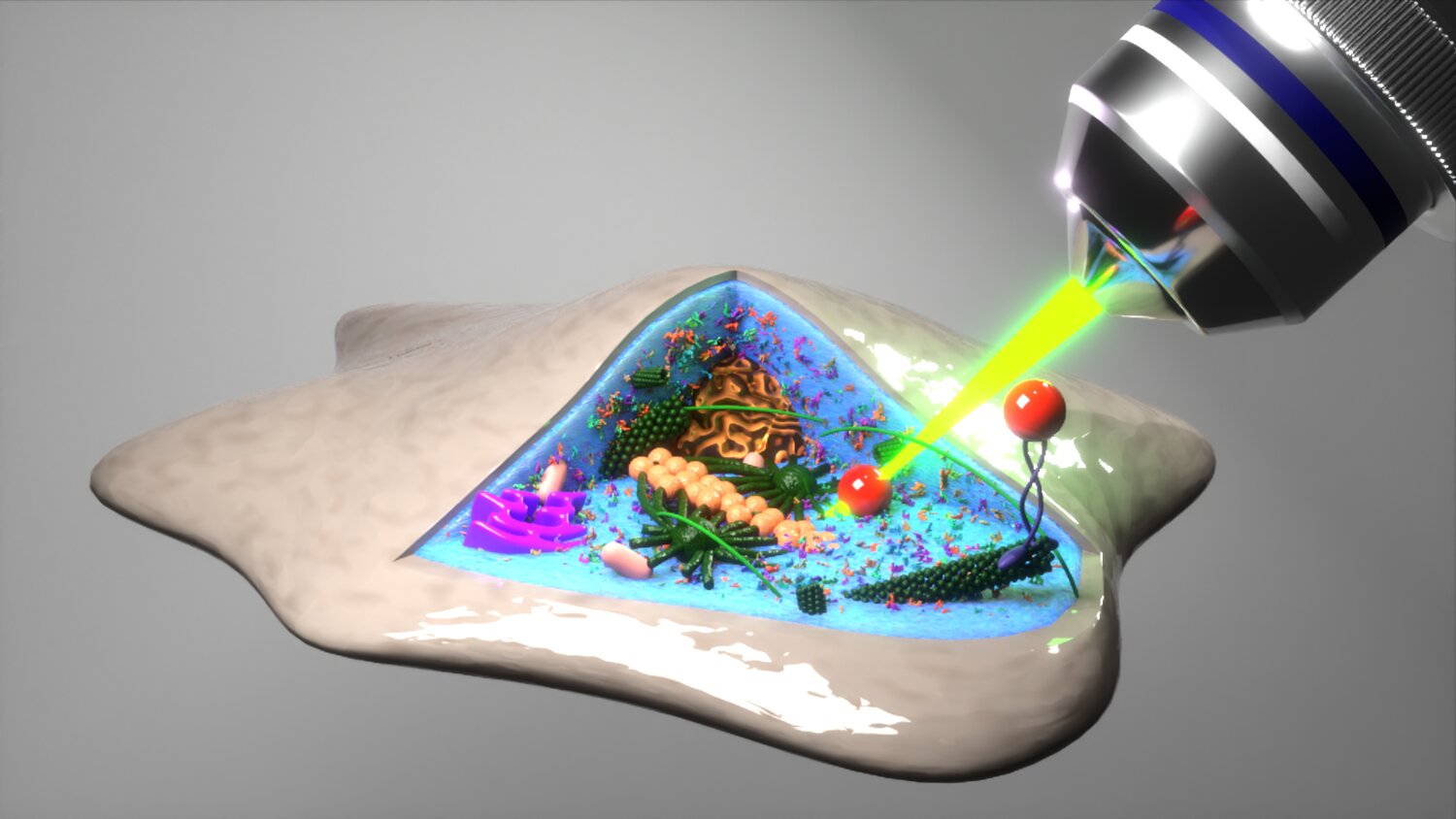Unlocking the Secrets of the Cell Interior: New Method Reveals Its Mechanical Properties

Scientists at the University of Göttingen have developed a novel approach that allows them to delve into the intricate inner workings of cells, revealing their previously hidden mechanical properties. This breakthrough holds significant potential for advancing our understanding of cellular processes and pushing the boundaries of biological and medical research.
For over a century, scientists have strived to understand the intricacies of cells, the fundamental building blocks of life. However, many of their properties remain shrouded within their interior, challenging even the most advanced research techniques. Traditional methods often prove destructive to the cell during analysis, hindering the pursuit of comprehensive knowledge.
The Göttingen researchers took a unique approach, capitalising on the inherent random movement of microscopic particles within the cell. These movements, often referred to as Brownian motion, hold a wealth of information about the cell's internal environment.
To unlock this hidden knowledge, the team first simulated the expected fluctuations of these particles. They then tested their predictions using sophisticated optical laser traps, capable of precisely controlling microparticles. By meticulously analysing the movement of these particles with nanometre precision and a time resolution of 50 microseconds, they uncovered a wealth of previously inaccessible data.
The analysis extended beyond the immediate movement, taking into account the history of each particle's path. Remarkably, the team observed that many particles exhibited a tendency to return to a specific location after being displaced. This "mean back relaxation" (MBR), as the researchers termed it, proved to be a powerful new tool for dissecting the complex forces governing particle movement within the cell.
Professor Matthias Krüger, from the Institute of Theoretical Physics, explained, "With MBR, we can extract more information from the object movements than with conventional methods." This breakthrough allows researchers to differentiate between active processes, driven by internal cellular mechanisms, and purely temperature-dependent movement, known as Brownian motion.
To further validate their method, the researchers applied it to living cells, venturing into the uncharted territory of the cell's interior.
Professor Timo Betz, head of the experimental group, expressed his astonishment at the results. "As our understanding of the cell's interior is still limited, it was unclear whether MBR could be applied here. When I saw the resulting curves, I was amazed, because we could describe the cell's interior very precisely using the approaches we developed for much simpler systems."
The research team's findings demonstrate the remarkable potential of their novel approach in unraveling the complexities of cellular mechanics. "The results show that combining close observation with new, intelligent analysis methods can provide valuable insights into the softness, hardness, and fluidity of the cell's interior," said Till Münker, first author of the study.
This groundbreaking study opens new avenues for understanding the inner workings of cells, paving the way for advancements in diverse fields, from drug development to tissue engineering. By gaining a deeper understanding of cellular mechanics, researchers can develop more targeted therapies, design novel biomaterials, and ultimately unlock the secrets of life itself.





